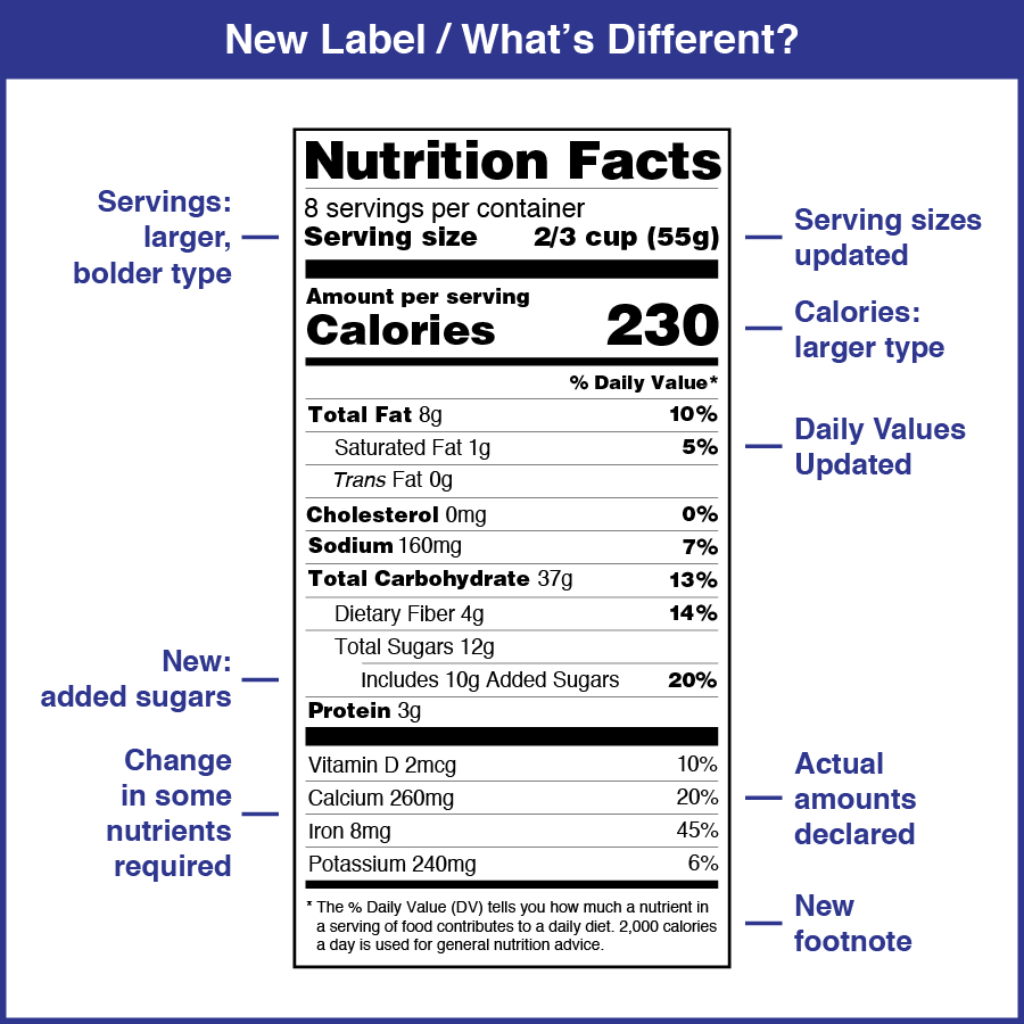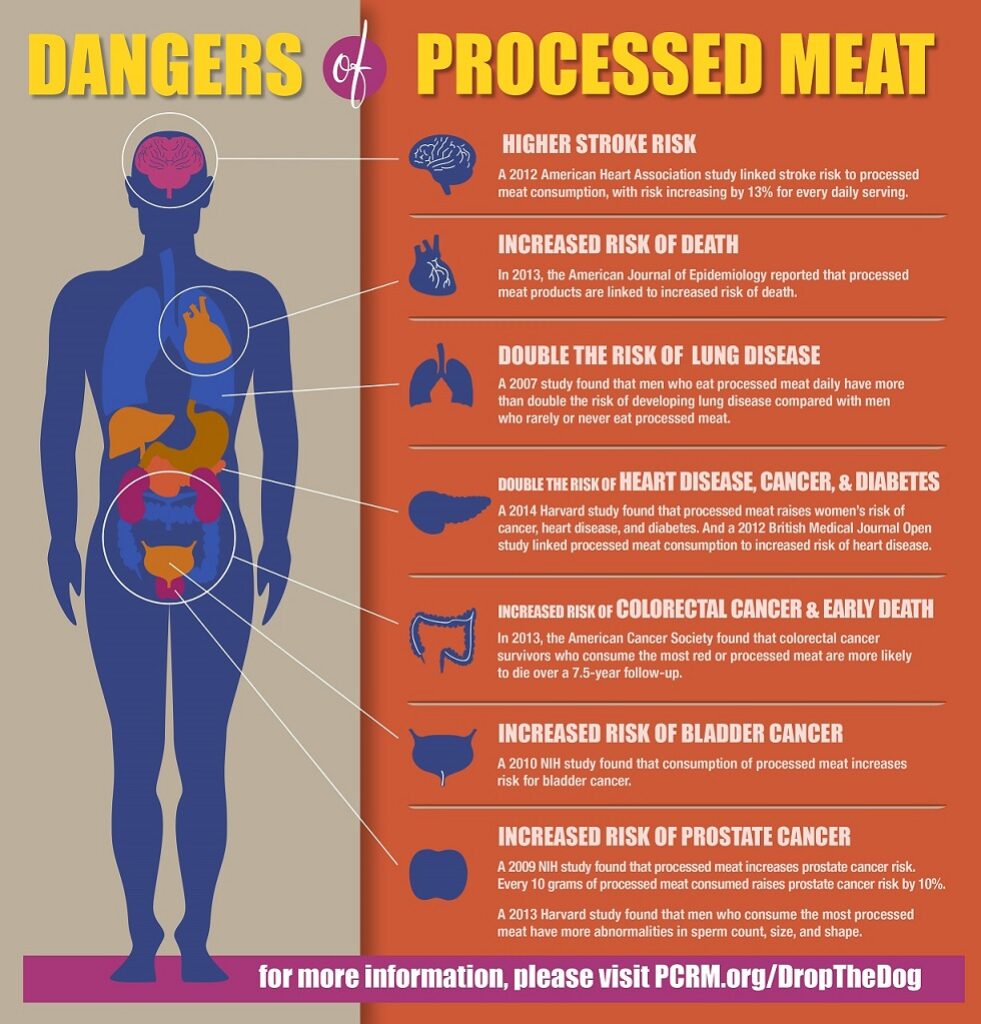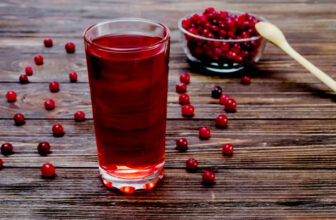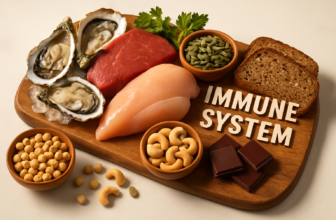
Picture this: you’re standing in front of your favorite pizza joint, mouth watering as you scan the menu. Your eyes inevitably land on that classic pepperoni pizza – those perfectly spiced, slightly crispy rounds of meat that have been America’s favorite pizza topping for decades. But then a nagging thought creeps in: “Is pepperoni actually healthy for me?”
If you’ve ever found yourself wondering about the health implications of that beloved spicy sausage, you’re definitely not alone. With all the conflicting information about processed meats floating around these days, it’s no wonder people are confused about whether pepperoni deserves a place in a healthy diet.
Here’s the thing – the relationship between pepperoni and health isn’t exactly black and white. While pepperoni does offer some nutritional benefits, it also comes with significant health concerns that you should know about. In this comprehensive guide, we’ll dive deep into everything you need to know about pepperoni’s impact on your health, from its nutritional profile to the latest research on processed meats.
Whether you’re a pizza lover trying to make informed choices or someone looking to understand processed meats better, this article will give you the complete picture. We’ll explore the good, the bad, and everything in between when it comes to pepperoni and your health.
What Exactly Is Pepperoni?
Before we can answer whether pepperoni is healthy, let’s start with the basics. Pepperoni is a type of cured sausage that’s become synonymous with American pizza culture, though its roots trace back to Italian salami traditions. This spicy, tangy meat is typically made from a mixture of pork and beef, though the exact proportions can vary between manufacturers.
The distinctive flavor and texture of pepperoni come from its unique preparation process. The meat is ground, mixed with spices (including paprika, which gives it that characteristic red color), salt, and various preservatives. It’s then stuffed into casings and undergoes a curing process that can take several weeks. This curing process not only develops the flavor but also helps preserve the meat, giving pepperoni its long shelf life.
What makes pepperoni different from other cured meats is its specific spice blend and the fact that it’s typically smoked during the curing process. The result is that familiar slightly chewy texture and bold, spicy flavor that pairs so perfectly with melted cheese and pizza sauce.
But here’s where things get interesting from a health perspective – pepperoni falls squarely into the category of processed meat. According to the World Health Organization and major cancer research institutions, processed meats are those that have been transformed through salting, curing, fermentation, smoking, or other processes to enhance flavor or improve preservation [1]. This classification has significant implications for health, which we’ll explore in detail throughout this article.
The Nutritional Breakdown: What’s Really in Pepperoni?
When it comes to understanding whether pepperoni is healthy, the numbers tell an important story. Let’s break down exactly what you’re getting in a typical serving of this popular processed meat.
A standard serving of pepperoni (about 28 grams or 14 slices) contains approximately 140-150 calories. Now, that might not sound like much, but here’s where it gets interesting – and potentially concerning. The vast majority of those calories come from fat, with pepperoni containing around 13 grams of fat per serving, including a significant amount of saturated fat [2].
From a macronutrient perspective, pepperoni is essentially a high-fat, moderate-protein food with virtually no carbohydrates. The protein content sits at about 5-6 grams per serving, which isn’t insignificant, but it comes with a hefty dose of fat and sodium. Speaking of sodium, this is where pepperoni really starts to raise red flags from a health standpoint.
The Sodium Situation
Here’s something that might surprise you: a single serving of pepperoni contains over 400 milligrams of sodium. To put that in perspective, the American Heart Association recommends limiting sodium intake to no more than 2,300 milligrams per day, with an ideal limit of 1,500 milligrams for most adults [3]. That means just one serving of pepperoni provides nearly 20% of your entire daily sodium allowance.
But let’s be honest – when was the last time you ate just 14 slices of pepperoni? If you’re having a couple of slices of pepperoni pizza, you’re likely consuming much more than that recommended serving size, which means you’re getting a substantial portion of your daily sodium from this single food source.

The Protein Perspective
On the positive side, pepperoni does provide a complete source of protein, meaning it contains all the essential amino acids your body needs. The protein in pepperoni includes important amino acids like leucine, which plays a crucial role in muscle protein synthesis, and lysine, which is essential for tissue repair and immune function [4].
However, you might be wondering if the protein benefits outweigh the potential drawbacks. While 5-6 grams of protein per serving isn’t negligible, you can get the same amount of protein from much healthier sources – like a hard-boiled egg, a small serving of grilled chicken, or even a handful of nuts – without the excessive sodium and saturated fat that comes with pepperoni.
Vitamins and Minerals: The Silver Lining
Despite its reputation as an unhealthy food, pepperoni does contain some beneficial vitamins and minerals. It’s a source of vitamin B12, which is essential for nerve function and the formation of red blood cells. You’ll also find zinc, which supports immune function and wound healing, and selenium, an important antioxidant mineral [5].
The presence of these nutrients is largely due to the meat content in pepperoni. However, it’s worth noting that you can get these same nutrients from leaner, less processed meat sources without the added sodium and preservatives that come with pepperoni.
The Health Risks: What the Research Really Says
Now we’re getting to the heart of the matter – the potential health risks associated with eating pepperoni. This is where the conversation gets serious, and it’s important to understand what decades of research have revealed about processed meats and their impact on human health.
The Cancer Connection
In 2015, the World Health Organization’s International Agency for Research on Cancer (IARC) made headlines when they classified processed meat as a Group 1 carcinogen – the same category as tobacco and asbestos [6]. Before you panic, let’s unpack what this actually means.
The classification doesn’t mean that pepperoni is as dangerous as cigarettes. What it means is that there’s sufficient evidence that processed meats, including pepperoni, can cause cancer in humans. Specifically, the research shows a strong link between processed meat consumption and colorectal cancer, with some evidence also pointing to stomach cancer [7].
According to the American Institute for Cancer Research, eating just 50 grams of processed meat daily (that’s about 1.75 ounces, or roughly two servings of pepperoni) increases the risk of colorectal cancer by 18% [8]. While that might sound alarming, it’s important to understand that this is a relative risk increase, not an absolute risk.

The Chemical Culprits
So what exactly makes processed meats like pepperoni potentially carcinogenic? The answer lies in the chemicals involved in processing and preservation. There are three main categories of compounds that researchers have identified as problematic:
Nitrates and Nitrites: These are added to pepperoni and other processed meats to preserve color, enhance flavor, and prevent bacterial growth. While they serve important food safety functions, nitrates and nitrites can form nitrosamines in the body, which are known carcinogenic compounds [9].
Heme Iron: This is a type of iron found naturally in red meat. While iron is essential for health, heme iron can promote the formation of cancer-causing compounds in the digestive tract [10].
Heterocyclic Amines and Polycyclic Aromatic Hydrocarbons: These compounds form when meat is cooked at high temperatures, which often happens during the processing of pepperoni. These chemicals have been shown to damage DNA and may contribute to cancer development [11].
Cardiovascular Concerns
The health risks of pepperoni extend beyond cancer. The high sodium content we discussed earlier has significant implications for cardiovascular health. Excessive sodium intake is strongly linked to high blood pressure, which is a major risk factor for heart disease and stroke [12].
Additionally, the saturated fat content in pepperoni can contribute to elevated cholesterol levels. While the relationship between saturated fat and heart disease is more nuanced than once thought, most health organizations still recommend limiting saturated fat intake, especially from processed sources [13].
The Inflammation Factor
Emerging research suggests that processed meats like pepperoni may contribute to chronic inflammation in the body. This low-grade, persistent inflammation is increasingly recognized as a driver of many chronic diseases, including heart disease, diabetes, and even some cancers [14].
The combination of high sodium, saturated fat, and various preservatives in pepperoni creates what researchers call a “pro-inflammatory” food profile. Regular consumption of such foods may contribute to the development of metabolic syndrome and other inflammatory conditions.
Putting Risk in Perspective
While these health risks are real and backed by substantial research, it’s important to put them in perspective. The occasional slice of pepperoni pizza isn’t going to dramatically increase your cancer risk or cause immediate health problems. The concerns arise with regular, frequent consumption of processed meats like pepperoni.
As one nutrition researcher put it, “It’s not about never eating processed meat again, but rather about making it an occasional treat rather than a dietary staple.” The key is understanding that pepperoni and similar processed meats should be consumed sparingly as part of an overall healthy diet.
What’s Really in Your Pepperoni: Ingredients and Processing Decoded
Understanding whether pepperoni is healthy requires taking a closer look at what actually goes into making this popular processed meat. The ingredient list on a typical package of pepperoni might surprise you – it’s often longer and more complex than you’d expect for what seems like a simple meat product.
The Basic Building Blocks
Traditional pepperoni starts with a mixture of pork and beef, though the exact ratio varies by manufacturer. Some brands use more pork for a milder flavor, while others lean heavily on beef for a more robust taste. The meat is ground to a specific consistency – not too fine, not too coarse – to achieve that characteristic pepperoni texture.
But the meat is just the beginning. To transform ordinary ground meat into pepperoni, manufacturers add a carefully crafted blend of spices and seasonings. Paprika is the star of the show, providing both the distinctive red color and much of the flavor profile. You’ll also typically find black pepper, garlic powder, fennel seeds, and various other spices that give pepperoni its signature taste.
The Preservation Process
Here’s where things get more complicated from a health perspective. To ensure pepperoni has a long shelf life and maintains its color and flavor, manufacturers add various preservatives and curing agents. The most common – and controversial – of these are sodium nitrite and sodium nitrate.
These compounds serve multiple purposes: they prevent the growth of harmful bacteria (particularly Clostridium botulinum, which causes botulism), maintain the appealing red color, and contribute to the characteristic cured meat flavor. Without these preservatives, pepperoni would quickly spoil and could pose serious food safety risks [15].

However, as we discussed earlier, these same preservatives can form potentially harmful compounds in the body. It’s a classic example of the trade-off between food safety and potential long-term health effects.
The “Uncured” Confusion
You might have noticed “uncured” or “no nitrates added” pepperoni in the grocery store and wondered if these are healthier options. Unfortunately, the reality is more complicated than the marketing suggests.
Most “uncured” pepperoni products still contain nitrates and nitrites – they just come from natural sources like celery powder or cherry powder instead of synthetic sodium nitrite. When these natural sources are processed in the stomach, they often convert to the same compounds that raise health concerns with traditional cured meats [16].
In fact, some studies have found that “naturally cured” meats can actually contain higher levels of nitrites than conventionally cured products. The lesson here is that “natural” doesn’t automatically mean “healthier” when it comes to processed meats.
Additional Additives
Beyond the basic meat, spices, and preservatives, commercial pepperoni often contains several other ingredients that might surprise you:
Sodium Erythorbate: This is an antioxidant that helps maintain color and flavor while also speeding up the curing process.
Lactic Acid Starter Culture: These beneficial bacteria help develop the tangy flavor characteristic of fermented sausages like pepperoni.
Dextrose: A simple sugar that feeds the starter culture and contributes to flavor development.
Modified Corn Starch: Sometimes added as a binder to improve texture and reduce fat separation.
Sodium Phosphate: Helps retain moisture and improves texture.
While most of these additives are generally recognized as safe by food safety authorities, they do contribute to the highly processed nature of pepperoni. The more processing and additives involved, the further the final product moves away from whole, natural foods.
The Manufacturing Process
The actual production of pepperoni involves several steps that further transform the basic ingredients. After mixing the meat with spices and additives, the mixture is stuffed into casings (either natural or synthetic) and then undergoes a controlled fermentation and drying process.
During fermentation, the starter cultures convert sugars into lactic acid, which lowers the pH and creates an environment hostile to harmful bacteria. This process also develops much of the characteristic tangy flavor. The pepperoni is then dried in carefully controlled conditions, often with some smoking, which further concentrates flavors and reduces moisture content.
This entire process can take several weeks and involves precise control of temperature, humidity, and airflow. While it’s undeniably a sophisticated process that creates a shelf-stable, flavorful product, it also results in a food that’s quite far removed from its original meat sources.
Understanding this processing helps explain why pepperoni falls into the category of ultra-processed foods – products that have undergone extensive industrial processing and contain ingredients not typically found in home kitchens. Research increasingly suggests that ultra-processed foods, regardless of their specific ingredients, may have negative health implications when consumed regularly [17].
How Does Pepperoni Stack Up Against Other Processed Meats?
When evaluating whether pepperoni is healthy, it’s helpful to see how it compares to other popular processed meats. While all processed meats share similar health concerns, there are some notable differences in their nutritional profiles and processing methods.
Pepperoni vs. Salami
Pepperoni and salami are closely related – in fact, pepperoni is essentially an American version of Italian salami. However, there are some key differences. Pepperoni typically contains more spices and has a spicier flavor profile than most salamis. From a nutritional standpoint, salami often contains slightly more protein and fewer calories per serving, but both are high in sodium and saturated fat [18].
Interestingly, some European salamis, particularly those made using traditional methods, may contain fewer additives than commercial American pepperoni. However, this varies significantly by brand and production method.
Pepperoni vs. Bacon
Bacon is another breakfast and pizza favorite, but how does it compare to pepperoni? Surprisingly, pepperoni often contains more sodium per serving than bacon, though bacon typically has more saturated fat. Both are classified as processed meats with similar cancer risk profiles [19].
One advantage bacon might have is that it’s often consumed in smaller quantities – a few strips with breakfast versus multiple slices on a pizza. However, both should be considered occasional treats rather than dietary staples.
Pepperoni vs. Deli Meats
Traditional deli meats like turkey, ham, or roast beef might seem like healthier options, but the reality is more nuanced. While some deli meats are lower in fat than pepperoni, they’re often just as high in sodium and still contain nitrates and other preservatives [20].
Turkey pepperoni, which has become increasingly popular, does offer some advantages over traditional pork and beef pepperoni. It typically contains about 60% less fat while maintaining a similar protein content. However, it still falls into the processed meat category with similar preservative concerns.
Healthier Alternatives: Satisfying Your Cravings Without the Risks
If you’re looking to reduce your pepperoni consumption without giving up flavor entirely, there are several alternatives worth considering. The key is finding options that satisfy your taste buds while providing better nutritional value.
![healthy-food-alternatives-swaps.gif]
Plant-Based Pepperoni
The plant-based meat revolution has reached pepperoni, and some of these alternatives are surprisingly convincing. Made from ingredients like soy protein, wheat gluten, or pea protein, plant-based pepperoni can provide similar flavors and textures without the health concerns associated with processed meat.
These alternatives are typically lower in saturated fat and don’t contain nitrates or nitrites. However, they can still be high in sodium, so it’s important to check labels. Some popular brands have managed to create plant-based pepperoni that even meat-lovers find satisfying.
Lean Protein Alternatives
For pizza lovers, consider swapping pepperoni for grilled chicken breast, which provides more protein with less fat and sodium. Chicken can be seasoned with paprika and other spices to mimic some of the flavors you love about pepperoni.
Other lean protein options include:
•Turkey breast (not processed turkey pepperoni, but actual sliced turkey breast)
•Grilled shrimp seasoned with spicy seasonings
•Lean ground turkey cooked with pepperoni-style spices
Vegetable-Based Toppings
Sometimes the best alternative is to skip the meat entirely and load up on flavorful vegetables. Roasted red peppers, caramelized onions, mushrooms, and sun-dried tomatoes can provide complex, satisfying flavors that make you forget about pepperoni.
Spicy vegetables like jalapeños or banana peppers can provide the heat that many people love about pepperoni, while adding beneficial nutrients and fiber to your meal.
Portion Control Strategies
If you’re not ready to give up pepperoni entirely, consider these strategies for reducing your intake:
The Half-and-Half Approach: Order pizza with pepperoni on only half, and load the other half with vegetables.
Thin and Sparse: When making pizza at home, use pepperoni more sparingly – think of it as a flavoring agent rather than the main topping.
Mix It Up: Combine a small amount of pepperoni with healthier proteins like grilled chicken or vegetables.
Reading Labels Like a Pro
When you do choose to buy pepperoni or other processed meats, becoming a savvy label reader can help you make better choices:
Look for shorter ingredient lists: Generally, fewer ingredients mean less processing.
Check sodium content: Some brands contain significantly less sodium than others.
Consider organic options: While still processed, organic pepperoni must meet stricter standards for ingredients and processing methods.
Watch serving sizes: Pay attention to what constitutes a serving – it’s often smaller than you think.
The Moderation Message
Here’s the bottom line: you don’t have to completely eliminate pepperoni from your diet to be healthy. The key is treating it as an occasional indulgence rather than a regular part of your meals. Think of pepperoni like dessert – something to enjoy in small amounts on special occasions.
Many nutrition experts suggest following the 80/20 rule: eat nutritious, whole foods 80% of the time, and allow yourself some flexibility for less healthy choices the remaining 20%. This approach can help you maintain a healthy diet while still enjoying the foods you love.
What Health Experts Actually Recommend
When it comes to pepperoni and processed meats in general, health experts and major medical organizations have developed clear guidelines based on decades of research. Understanding these recommendations can help you make informed decisions about including pepperoni in your diet.
Major Health Organization Guidelines
The American Institute for Cancer Research takes a strong stance on processed meats, recommending that people avoid them entirely if possible. Their position is based on the substantial evidence linking processed meat consumption to increased cancer risk [21]. However, they acknowledge that complete avoidance may not be realistic for everyone.
The American Heart Association takes a slightly more moderate approach, focusing on the cardiovascular risks associated with high sodium and saturated fat intake. They recommend limiting processed meats and choosing leaner alternatives when possible [22].
The World Health Organization, through their dietary guidelines, suggests that if you do consume processed meats, you should do so sparingly and as part of an overall balanced diet rich in fruits, vegetables, and whole grains [23].

The Dietitian’s Perspective
Registered dietitians often take a practical approach to the pepperoni question. Rather than advocating for complete elimination, many focus on helping people understand portion sizes and frequency of consumption.
“I tell my clients that pepperoni can be part of a healthy diet if consumed occasionally and in reasonable portions,” explains one clinical dietitian. “The problem arises when people are eating processed meats multiple times per week or in large quantities.”
Many nutrition professionals emphasize the importance of looking at overall dietary patterns rather than focusing on individual foods. A person who eats pepperoni pizza once a month as part of an otherwise healthy diet rich in vegetables, fruits, and whole grains is in a very different situation than someone who relies on processed meats as a primary protein source.
Practical Guidelines for Consumption
Based on current research and expert recommendations, here are some practical guidelines for pepperoni consumption:
Frequency: Limit processed meat consumption to no more than once or twice per week. This includes not just pepperoni, but all processed meats like bacon, sausage, and deli meats.
Portion Size: When you do eat pepperoni, stick to reasonable portions. A few slices on a pizza or a small amount in a recipe is very different from eating large quantities.
Balance: When consuming pepperoni, balance it with plenty of vegetables and other nutrient-dense foods. If you’re having pepperoni pizza, load it up with vegetable toppings.
Quality Matters: Choose higher-quality pepperoni when possible. Look for products with fewer additives, lower sodium content, and from companies that use more traditional processing methods.
Special Considerations for Different Groups
Certain groups of people may need to be particularly cautious about pepperoni consumption:
Children and Adolescents: Young people are often heavy consumers of pizza and processed meats. Parents should be especially mindful of limiting these foods and introducing children to a variety of healthier protein sources.
Pregnant Women: Some health organizations recommend that pregnant women limit processed meat consumption due to both the cancer risk and the potential for foodborne illness.
People with High Blood Pressure: The high sodium content in pepperoni makes it particularly problematic for people trying to manage their blood pressure.
Cancer Survivors: Individuals with a history of colorectal or stomach cancer may want to avoid processed meats entirely, based on their doctor’s recommendations.
The Role of Overall Diet Quality
One important point that experts consistently emphasize is that no single food determines your health outcomes. The overall quality of your diet matters much more than whether you occasionally eat pepperoni.
A diet rich in fruits, vegetables, whole grains, lean proteins, and healthy fats can provide protective benefits that may help offset the occasional consumption of less healthy foods. This doesn’t mean you can eat unlimited amounts of processed meat as long as you eat vegetables too, but it does mean that occasional indulgences in the context of an overall healthy diet are unlikely to cause significant harm.
Making Informed Choices
The key to navigating the pepperoni question is having accurate information and making conscious choices. Rather than mindlessly consuming processed meats out of habit, consider each occasion as a deliberate decision.
Ask yourself questions like:
•How often have I eaten processed meat this week?
•Am I eating this because I really want it, or just out of convenience?
•Are there healthier alternatives that would satisfy me just as much?
•Am I balancing this with plenty of nutritious foods?
This mindful approach to eating can help you enjoy foods like pepperoni occasionally while maintaining overall good health.
The Future of Processed Meat Guidelines
It’s worth noting that recommendations around processed meats continue to evolve as new research emerges. Some recent studies have suggested that not all processed meats carry the same level of risk, and processing methods may matter more than previously thought [24].
However, the current scientific consensus remains clear: processed meats like pepperoni should be consumed sparingly as part of an overall healthy diet. As research continues, these guidelines may become more nuanced, but for now, moderation is the key message from health experts.
Frequently Asked Questions About Pepperoni and Health
Is turkey pepperoni healthier than regular pepperoni?
Turkey pepperoni does offer some nutritional advantages over traditional pork and beef pepperoni. It typically contains about 60% less fat and fewer calories per serving while providing similar amounts of protein. However, it’s important to understand that turkey pepperoni is still a processed meat with many of the same health concerns as regular pepperoni.
The sodium content in turkey pepperoni is often just as high as traditional varieties, and it still contains nitrates and other preservatives. While it may be a slightly better choice if you’re trying to reduce fat intake, it shouldn’t be considered a “health food.” The same moderation guidelines apply – treat it as an occasional indulgence rather than a dietary staple.
Can I eat pepperoni if I’m trying to lose weight?
Pepperoni can technically fit into a weight loss diet if consumed in very small amounts and infrequently, but it’s not an ideal choice for several reasons. With about 140-150 calories in just 14 slices, pepperoni is very calorie-dense, meaning you get a lot of calories for a relatively small amount of food.
More importantly, pepperoni doesn’t provide much satiety – it’s unlikely to keep you feeling full for long despite its high calorie content. The high sodium content can also contribute to water retention, which might affect how you feel and look.
If you’re trying to lose weight, you’re better off focusing on lean proteins like chicken breast, fish, or plant-based options that provide more protein and nutrients for fewer calories. Save pepperoni for very occasional treats, and when you do have it, practice strict portion control.
Are there any health benefits to eating pepperoni?
While pepperoni is primarily known for its health risks, it does provide some nutritional benefits. It’s a source of complete protein, containing all essential amino acids needed for muscle maintenance and repair. Pepperoni also provides vitamin B12, which is crucial for nerve function and red blood cell formation, along with zinc and selenium.
However, these benefits need to be weighed against the significant drawbacks. You can get all of these nutrients from much healthier sources without the excessive sodium, saturated fat, and preservatives found in pepperoni. For example, lean meats, fish, eggs, and even fortified plant-based foods can provide the same nutrients with far fewer health risks.
The small nutritional benefits of pepperoni don’t outweigh the potential health concerns, which is why most nutrition experts recommend getting these nutrients from other sources.
How much pepperoni is safe to eat?
There’s no officially established “safe” amount of pepperoni, but health experts generally recommend limiting all processed meats to no more than 50 grams (about 1.75 ounces) per week. To put this in perspective, that’s roughly equivalent to 3-4 servings of pepperoni per week, where a serving is about 14 slices.
However, many experts suggest even less frequent consumption. The American Institute for Cancer Research recommends avoiding processed meats entirely if possible, while other organizations suggest treating them as occasional indulgences rather than regular dietary components.
A practical approach might be to limit pepperoni to once or twice per month, and when you do have it, stick to reasonable portions. Remember that this weekly limit should include all processed meats – so if you have bacon for breakfast and a deli sandwich for lunch, you’ve already exceeded the recommended amount for the week.
Is organic or “natural” pepperoni healthier?
Organic and “natural” pepperoni products can be somewhat healthier than conventional varieties, but the differences are often smaller than marketing might suggest. Organic pepperoni must be made from animals raised without antibiotics or growth hormones, and it can’t contain certain synthetic preservatives.
However, organic pepperoni is still a processed meat that typically contains nitrates (often from natural sources like celery powder) and high amounts of sodium. Some studies have even found that “naturally cured” meats can contain higher levels of nitrites than conventionally processed ones.
The “uncured” or “no nitrates added” labels can be particularly misleading. These products usually still contain nitrates from natural sources, which can form the same potentially harmful compounds in your body as synthetic nitrates.
While organic options might be slightly better due to higher animal welfare standards and fewer synthetic additives, they’re still processed meats that should be consumed sparingly. Don’t let organic labeling give you a false sense of security about eating large amounts of processed meat.
Can children safely eat pepperoni?
Children can eat pepperoni occasionally as part of a balanced diet, but parents should be particularly mindful of limiting processed meat consumption in young people. Children often consume more pizza and processed meats than adults, which can lead to excessive intake of sodium and preservatives during crucial developmental years.
The high sodium content in pepperoni is especially concerning for children, as excessive sodium intake during childhood can contribute to the development of high blood pressure later in life. Additionally, establishing healthy eating patterns early is crucial for lifelong health.
If your child enjoys pepperoni pizza, consider making it an occasional treat rather than a regular meal. When you do serve it, try to balance it with plenty of vegetables and limit the portion size. You might also experiment with healthier alternatives like turkey pepperoni or plant-based options to satisfy their taste preferences while reducing health risks.
Does cooking pepperoni make it healthier or less healthy?
Cooking pepperoni, such as when it’s baked on a pizza, doesn’t significantly improve its nutritional profile, and in some ways, it might make it slightly less healthy. When pepperoni is cooked at high temperatures, it can form additional compounds called heterocyclic amines and polycyclic aromatic hydrocarbons, which are potentially carcinogenic.
On the positive side, cooking does allow some of the fat to render out, which can slightly reduce the calorie and fat content. However, this benefit is minimal and doesn’t offset the other health concerns.
The cooking process also doesn’t reduce the sodium content or eliminate the preservatives that are the primary health concerns with pepperoni. Whether eaten cold or cooked, pepperoni remains a processed meat with the same basic health implications.
If you’re going to eat pepperoni, the cooking method isn’t likely to make a significant difference in its health impact. The more important factors are how much and how often you consume it.
The Bottom Line: Making Peace with Pepperoni
So, is pepperoni healthy? The honest answer is no – pepperoni is not a health food, and it shouldn’t be a regular part of a healthy diet. But that doesn’t mean you need to swear off pepperoni pizza forever or feel guilty about enjoying it occasionally.
The key takeaway from all the research and expert recommendations is that pepperoni, like many processed meats, falls into the category of foods that should be consumed sparingly. The combination of high sodium, saturated fat, and preservatives, along with the established links to cancer risk, make it clear that pepperoni isn’t something you want to eat regularly.
However, the occasional slice of pepperoni pizza in the context of an otherwise healthy diet is unlikely to cause significant harm. The most important thing is being mindful about your choices and understanding what you’re consuming.
Here are the key points to remember:
Moderation is crucial: Limit processed meats like pepperoni to no more than once or twice per week, and keep portions reasonable.
Quality matters: When you do choose pepperoni, opt for higher-quality products with fewer additives when possible.
Balance is key: If you’re having pepperoni, balance it with plenty of vegetables and other nutrient-dense foods.
Consider alternatives: Experiment with healthier alternatives like plant-based pepperoni, lean proteins, or flavorful vegetables.
Focus on overall diet quality: Remember that no single food determines your health – your overall eating pattern matters most.
The goal isn’t perfection; it’s making informed choices that support your long-term health while still allowing you to enjoy the foods you love. By understanding the facts about pepperoni and processed meats, you can make decisions that align with your health goals and personal preferences.
Whether you decide to eliminate pepperoni entirely, enjoy it occasionally, or find satisfying alternatives, the most important thing is that you’re making conscious, informed choices about what you eat. Your health is worth the effort, and small changes in how you approach foods like pepperoni can add up to significant benefits over time.
References
[1] World Health Organization International Agency for Research on Cancer. “IARC Monographs evaluate consumption of red meat and processed meat.” https://www.iarc.who.int/wp-content/uploads/2018/07/pr240_E.pdf
[2] United States Department of Agriculture. “FoodData Central – Pepperoni.” https://fdc.nal.usda.gov/fdc-app.html#/food-details/174575/nutrients
[3] American Heart Association. “How much sodium should I eat per day?” https://www.heart.org/en/healthy-living/healthy-eating/eat-smart/sodium/how-much-sodium-should-i-eat-per-day
[4] Listonic. “Pepperoni — Nutrients, Health Benefits, and Shopping Tips.” https://listonic.com/p/nutrition/pepperoni
[5] National Institutes of Health Office of Dietary Supplements. “Selenium Fact Sheet for Health Professionals.” https://ods.od.nih.gov/factsheets/Selenium-HealthProfessional/
[6] World Health Organization. “Q&A on the carcinogenicity of the consumption of red meat and processed meat.” https://www.who.int/news-room/q-a-detail/cancer-carcinogenicity-of-the-consumption-of-red-meat-and-processed-meat
[7] MD Anderson Cancer Center. “Processed meat and cancer: What you need to know.” https://www.mdanderson.org/publications/focused-on-health/eat-less-processed-meat.h11-1590624.html
[8] American Institute for Cancer Research. “Processed Meat.” https://www.aicr.org/cancer-prevention/food-facts/processed-meat/
[9] National Cancer Institute. “Chemicals in Meat Cooked at High Temperatures and Cancer Risk.” https://www.cancer.gov/about-cancer/causes-prevention/risk/diet/cooked-meats-fact-sheet
[10] Cancer Research UK. “Processed and red meat and cancer.” https://www.cancerresearchuk.org/about-cancer/causes-of-cancer/diet-and-cancer/processed-and-red-meat-and-cancer
[11] Harvard T.H. Chan School of Public Health. “Protein.” https://www.hsph.harvard.edu/nutritionsource/what-should-you-eat/protein/
[12] American Heart Association. “Why Should I Limit Sodium?” https://www.heart.org/en/healthy-living/healthy-eating/eat-smart/sodium/why-should-i-limit-sodium
[13] Harvard Health Publishing. “The truth about fats: the good, the bad, and the in-between.” https://www.health.harvard.edu/staying-healthy/the-truth-about-fats-bad-and-good
[14] Harvard Health Publishing. “Foods that fight inflammation.” https://www.health.harvard.edu/staying-healthy/foods-that-fight-inflammation
[15] U.S. Food and Drug Administration. “Food Additives & Ingredients – Nitrates and Nitrites.” https://www.fda.gov/food/food-additives-petitions/food-additive-status-list
[16] Consumer Reports. “How safe are nitrates in food?” https://www.consumerreports.org/food-safety/how-safe-are-nitrates-in-food/
[17] BMJ. “Ultra-processed foods and health outcomes: a narrative review.” https://www.bmj.com/content/365/bmj.l2289
[18] FoodStruct. “Pepperoni vs. Salami — Health Impact and Nutrition Comparison.” https://foodstruct.com/compare/pepperoni-vs-salami
[19] Cleveland Clinic. “Is Deli Meat Bad for You? How to Choose a Healthier Lunch Meat.” https://health.clevelandclinic.org/how-can-i-choose-a-healthier-lunch-meat
[20] WebMD. “What You Should Know About Processed Meat.” https://www.webmd.com/food-recipes/ss/slideshow-processed-meats
[21] American Institute for Cancer Research. “Recommendations for Cancer Prevention.” https://www.aicr.org/cancer-prevention/recommendations/
[22] American Heart Association. “Meat, Poultry, and Fish: Picking Healthy Proteins.” https://www.heart.org/en/healthy-living/healthy-eating/eat-smart/nutrition-basics/meat-poultry-and-fish-picking-healthy-proteins
[23] World Health Organization. “Healthy diet.” https://www.who.int/news-room/fact-sheets/detail/healthy-diet
[24] The New York Times. “Are Some Processed Meats Worse for You Than Others?” https://www.nytimes.com/2022/06/29/well/eat/processed-meats.html




